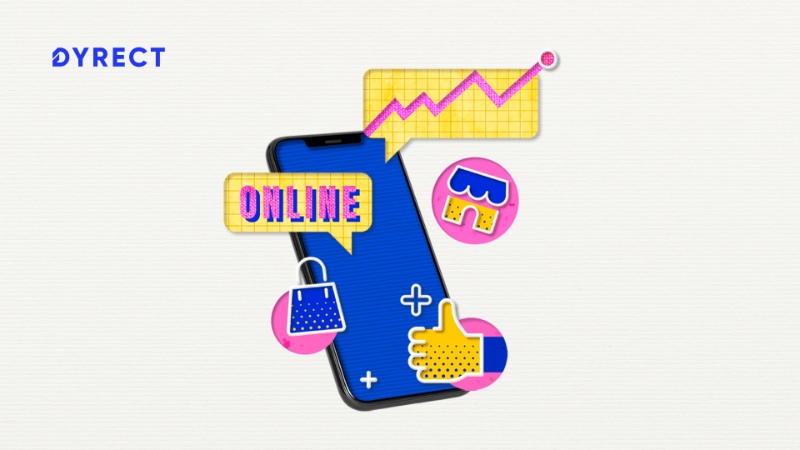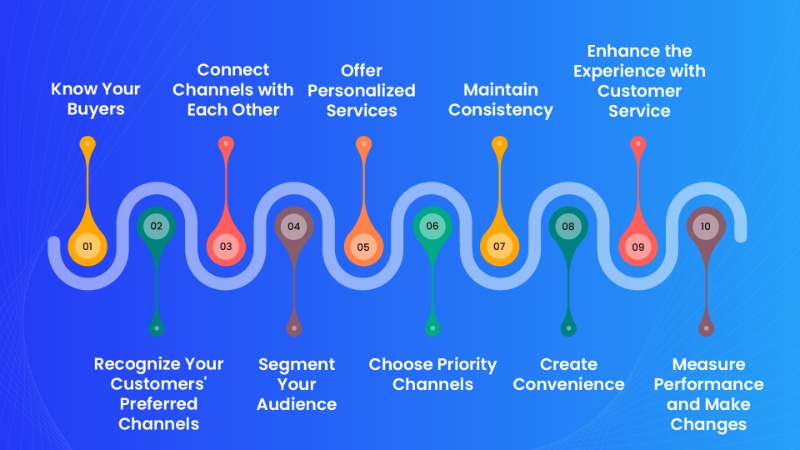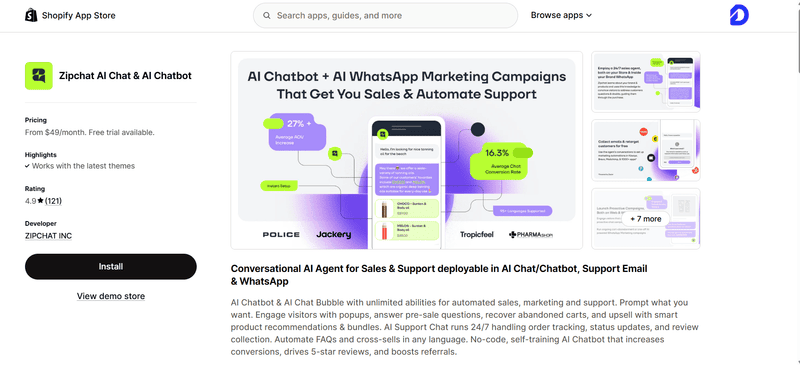
Customer experiences in today’s technology driven world are largely focused around creating meaningful and creative ways to engage with customers, both new and existing. While a lot of brands use multiple channels to engage with their customers, it is the ones that create omnichannel engagements that truly stand out.
Here’s a quick read about what omnichannel marketing is all about, along with 10 handy tips to help you create a successful omnichannel marketing strategy.
What is an Omnichannel Marketing Strategy?
An omnichannel marketing strategy is an approach that involves integrating multiple marketing channels to create a unified and cohesive customer experience. It's a holistic approach to marketing that recognizes the importance of meeting customers where they are and providing a consistent brand experience across all touchpoints.
The Importance of Omnichannel Marketing Strategy
If you’re wondering whether small and medium businesses ought to invest in an omnichannel marketing strategy, the answer is a resounding yes!
In today's digital landscape, consumers are more connected than ever, and their buying journeys often span various channels and devices. From browsing products on a mobile app to making a purchase in-store or engaging with a brand's social media, customers expect a seamless transition between these touchpoints.
Here are some reasons why an omnichannel marketing strategy is essential.
Customer Expectations
Modern consumers have elevated their expectations when it comes to their interactions with businesses. They no longer view brands and retailers as isolated entities but rather as interconnected nodes in a vast and seamless web of commerce. This shift in perspective has given rise to a set of heightened expectations:
Consistency Across Channels
Customers expect a consistent and unified experience across all the channels they use to interact with a brand. Whether they are browsing a website, visiting a physical store, or engaging on social media, they anticipate a coherent brand message, look, and feel.
Convenience and Accessibility
Convenience is paramount in the minds of consumers. They want to access information, products, and services quickly and effortlessly. This translates into a demand for features like buy online, pick up in-store (BOPIS), fast shipping options, and easy returns.
Personalization
Customers now expect brands to know them personally and anticipate their needs. They want tailored product recommendations, personalized offers, and content that speaks directly to their interests and preferences.
Seamless Transitions
In today's omnichannel world, customers frequently move between online and offline touchpoints. They expect these transitions to be smooth, with no loss of information or context. For instance, if they start filling a shopping cart online, they want to be able to pick up where they left off when they visit a physical store.
Competitive Advantage
Businesses that excel in omnichannel marketing enjoy a significant competitive advantage. They are better positioned to thrive in a crowded marketplace for several reasons:
Enhanced Customer Engagement
Omnichannel strategies allow businesses to engage with their customers more effectively. By meeting customers where they are and delivering personalized, relevant content, businesses can foster deeper connections and loyalty.
Expanded Reach
An omnichannel approach enables businesses to reach customers across a wide range of touchpoints, both digital and physical. This broad reach increases brand visibility and the potential for customer acquisition.
Differentiation
In a world where products and services can be commoditized, the customer experience becomes a key differentiator. Businesses that can provide a seamless and enjoyable omnichannel experience set themselves apart from competitors.
Brand Loyalty
The trust and loyalty that result from a positive omnichannel experience can lead to repeat business and advocacy. Satisfied customers are more likely to become brand advocates, spreading the word and bringing in new customers.
Data-Driven Insights

Omnichannel strategies are a treasure trove of data and insights that can drive business decisions and improve marketing efforts. Here's how data plays a pivotal role:
Comprehensive Customer Understanding
By collecting data from various touchpoints, businesses gain a holistic view of their customers. This includes demographic information, browsing behavior, purchase history, and even in-store interactions. This depth of understanding informs marketing strategies and product offerings.
Personalization at Scale
Data allows businesses to personalize their marketing efforts at scale. Algorithms can analyze customer behavior and preferences to deliver individualized recommendations, emails, and advertisements. This level of personalization increases the likelihood of conversion.
Informed Decision-Making
Data-driven insights enable businesses to make informed decisions about their marketing spend. They can allocate resources to the channels and campaigns that yield the best results, optimizing their return on investment.
Revenue Growth
Perhaps the most compelling argument for embracing omnichannel marketing is its potential for revenue growth. When executed effectively, an omnichannel approach can drive increased sales and revenue in several ways:
Enhanced Customer Lifetime Value
By nurturing customer relationships and providing a consistently positive experience, businesses can increase customer loyalty. Loyal customers tend to spend more over time, contributing to long-term revenue growth.
Reduced Cart Abandonment
Omnichannel strategies can help reduce cart abandonment rates. For example, customers who abandon an online shopping cart may receive a personalized email reminder, enticing them to complete their purchase.
Upselling and Cross-Selling
Personalization and data-driven insights enable businesses to suggest complementary products or upsell to higher-priced items. This can boost the average transaction value and overall revenue.
Greater Market Share
Businesses that effectively leverage omnichannel marketing can expand their market share by reaching new customers and retaining existing ones. This growth potential directly impacts revenue.
How to Create an Omnichannel Marketing Strategy
Let us now delve deeper into the critical elements of creating an effective omnichannel marketing strategy. Building a successful strategy requires a comprehensive understanding of your audience, their preferences, and how to seamlessly connect and engage with them across various channels.

1. Know Your Buyers
Understanding your buyers is at the heart of any successful marketing strategy. To truly know your audience, conduct in-depth market research to identify your target audience's demographics, behaviors, preferences, and pain points. This research should serve as the foundation of your strategy.
Then, use this data to create detailed buyer personas that represent different segments of your target audience. These personas should include information such as age, gender, income, interests, and buying behaviors.
Finally, map out customer journeys to gain insights into how your audience interacts with your brand.
2. Recognize Your Customers' Preferred Channels
Once you have a clear picture of your audience, it's essential to determine the channels they prefer for communication and engagement.
To do this, you could conduct surveys or gather feedback to understand which channels your customers prefer. This could include email, social media, mobile apps, websites, physical stores, or other platforms.
3. Connect Channels with Each Other
Seamless connectivity between your marketing channels is a cornerstone of a successful omnichannel strategy. To achieve this, ensure that data from different channels can be easily integrated and shared. This allows for a unified view of customer behavior and preferences.
For example, if a customer has added a product to their cart online, and visits your physical store at a later time, your store staff ought to be able to use that information to guide the customer to make their purchase.
4. Segment Your Audience
Segmentation enables you to deliver highly targeted and relevant content to specific groups within your audience.
An easy way to do this is to segment your audience based on demographics, purchase history, online behavior, and other relevant criteria.
Doing this will enable you to craft marketing messages and campaigns that resonate with each segment, allowing you to personalize content to address the unique needs and preferences of each group.
5. Offer Personalized Services
Personalization is a key driver of customer engagement and loyalty. To offer personalized service, implement dynamic content strategies that adapt based on user behavior.
For example, you could use data from past purchases as well as what products your customers show the most interest in while on your website to create specialized offers for them.
6. Choose Priority Channels
While it's essential to maintain a presence across multiple channels, it's equally important to identify and prioritize those channels that are most effective for your business:
Analyze the performance of each channel in terms of customer engagement, conversion rates, and return on investment.
This will allow you to plan better resource allocation, focusing on the channels that yield the best results while maintaining a presence on others.
7. Maintain Consistency
Consistency is key to building a strong and recognizable brand. This makes it important to ensure all your communications across all channels adhere to your brand guidelines, including visual identity, tone of voice, and messaging.
This consistency must extend to all partners in addition to internal teams. That way, your customers can be assured of a consistent brand experience across all channels.
8. Create Convenience
One of the primary goals of an omnichannel strategy is to enhance the customer experience. Here are a couple of examples of how you could leverage omnichannel engagements to create better customer experiences.
Buy Online, Pick Up In-Store (BOPIS)
Offer the option for customers to purchase products online and pick them up at a physical store. This provides flexibility and convenience.
View Physical Stock Online
Allow customers to check the availability of products in physical stores through your website or mobile app. This reduces uncertainty and encourages in-store visits.
9. Enhance the Experience with Customer Service
Exceptional customer service is a critical component of the omnichannel experience. Here are some tips to help you provide exceptional customer service.
Train your customer service teams to provide consistent support across all channels. Empower them with the knowledge and tools they need to resolve customer inquiries effectively.
Ensure that customer service is available and responsive across all channels, including social media, chat, email, phone, and in-store interactions.
10. Measure Performance and Make Changes
Regularly monitoring and optimizing your omnichannel strategy is essential for long-term success. Here are some handy tips to help you do just that.
Define and track KPIs (key performance indicators) specific to each channel and campaign. These may include conversion rates, click-through rates, customer retention, and customer lifetime value.
Continuously test and experiment with different strategies, messages, and channels to identify what works best for your audience.
Create the best omnichannel experiences with Dyrect
If you’re looking to build meaningful post-purchase omnichannel engagements, we’ve got you covered.
The first thing you need to start building your omnichannel marketing strategy is customer contact information, and our marketing leading single-click product registration software gives you access to just that.
Get access to customer behavior insights and more to help you create personalized omnichannel experiences.
Leverage our no-code builder to create cross-selling and upselling opportunities, drive customer loyalty programs, offer proactive customer service, and much more.
Book a demo with our team now, and learn more about why Dyrect is the chosen post-purchase experience partner of leading global brands. Come, join the Dyrect revolution!


